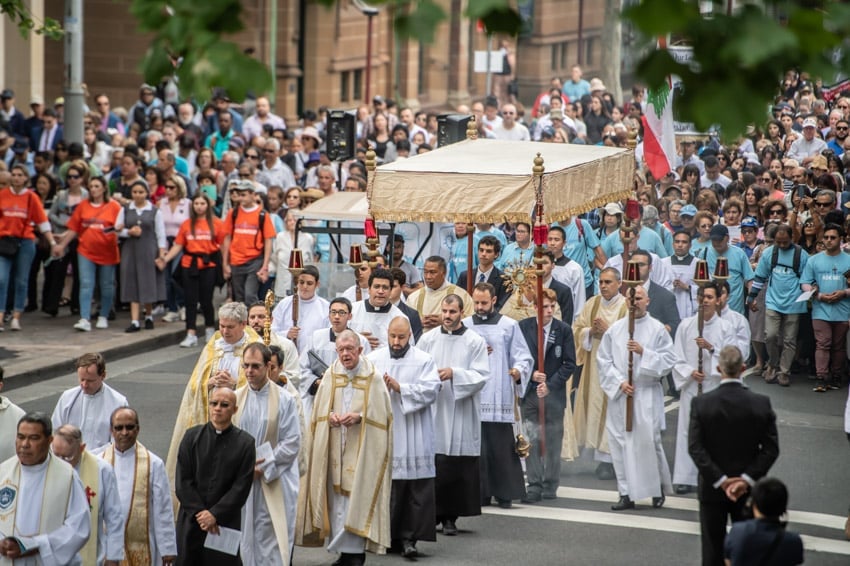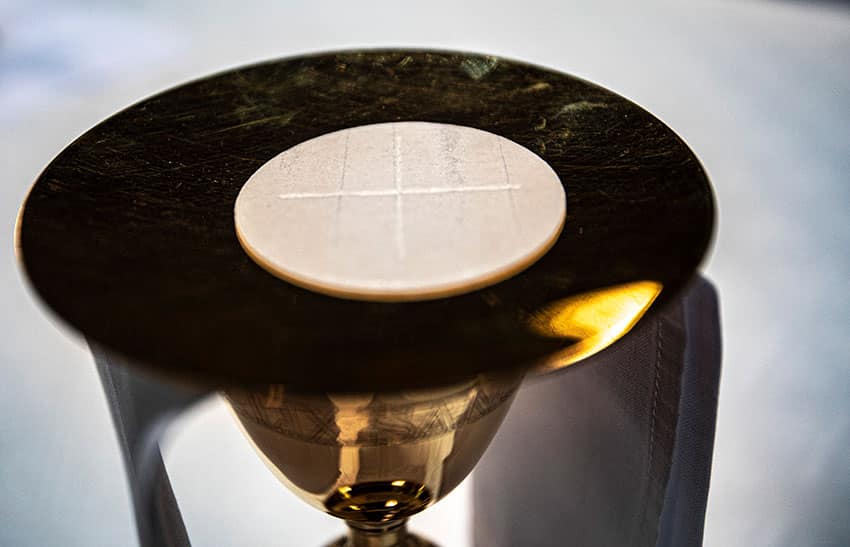
It’s Corpus Christi, which is a great time to be Catholic in public, as well as private.
I love Eucharistic processions, because when I was growing up in the 1970s and 1980s, I hardly ever saw one. Adoration of the Blessed Sacrament had really dropped out of fashion.
This is weird, because Pope St Paul VI, the second Pope of Vatican II, said the exact opposite. He’s quoted in the Catechism, section 1378:
“The Catholic Church has always offered and still offers to the sacrament of the Eucharist the cult of adoration, not only during Mass, but also outside of it, reserving the consecrated hosts with the utmost care, exposing them to the solemn veneration of the faithful, and carrying them in procession.”
Thankfully someone was listening to the pope, because in my lifetime I’ve seen an incredible revival of eucharistic adoration across Australia.
And it came from the grass roots. There was no roundtable, or strategic plan, or marketing officer. No one wrote a discussion paper, or held any meetings, or hired a project manager.
Eucharistic adoration simply came back because ordinary Catholics wanted to adore Jesus in the exposed host, and Jesus wanted that too.
So they did it. They brought along friends, and friends of friends. They persuaded priests to expose the Blessed Sacrament in their churches for longer and longer.
They advised other people on how to do it. They created rosters and stuck to them. Above all, they worshipped and adored and Jesus, simply because they loved hanging out with him.
These people gave Jesus Christ, their lover and creator, the gift of their time. It’s the one thing he really wants, and the one thing we’re most stingy about giving him.
The University of Notre Dame academic Stephen Bullivant and I recently surveyed over two thousand Australian Catholics, three quarters of whom were regular Mass goers. We found that nationally, 93 per cent of them believed in the real presence of Jesus in the eucharist.
But only 51 per cent of the irregular Mass-goers believed, and only 26 per cent of the Catholics who never went to Mass. It was the same in each Australian diocese—“lots of practising Catholics” equals “lots of belief in the real presence of Jesus.”
If you’re wondering which diocese came out in front, it was Wagga Wagga, where 91 per cent of our sample went to Sunday Mass, and 93 per cent of them believed in the real presence.

Age is a factor. We found that belief in the real presence was much higher among just two groups – Catholics under the age of 40 (92 per cent) and over the age of 80 (86 per cent).
The lowest rate of belief in the real presence of Jesus in the eucharist was in the 40 to 60 age group – only 75 per cent of them believed. This is the age group most likely to be employed in church offices, schools, and agencies.
It’s also the age group in our sample that was least likely to go to Mass regularly. Only 66 per cent of the 50 to 59 year olds went to Mass regularly on Sundays.
The under 30s and the over 80s knocked them out of the park with Sunday Mass attendance rates of 85 per cent each.
There’s a generation gap in the church in Australia today around belief in Jesus’ presence in the Eucharist.
The middle-aged group is currently shaping most of the church’s “official” policy and positions in ways that reflect their much lower levels of belief in the Eucharist.
It also explains why the Plenary Council, led by the same age group, met with resistance or a lack of interest from ordinary younger Catholics and much older Catholics.
If synodality reads the “signs of the times,” and looks at how the Spirit is working in the church, it can’t ignore these realities. People are adoring Jesus in the Eucharist in Australia at rapidly rising rates.
Young people are coming to Mass freely because they believe in the Eucharist. You will find them in parishes with priests who believe in the Eucharist.
Take courage. On Corpus Christi today, we see that the little church in Australia is very much alive and gathered around its one true love, Jesus Christ.
It’s amazing what happens in the church when you clear a bit of space for God and don’t get in his way. He promised he would be with us always – and here he is, right in front of us.
